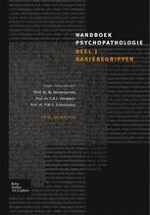2008 | OriginalPaper | Hoofdstuk
7 Angststoornissen
Auteurs : P.M.G. Emmelkamp, T. Ehring, M.P. Powers
Gepubliceerd in: Handboek psychopathologie deel 1
Uitgeverij: Bohn Stafleu van Loghum
2008 | OriginalPaper | Hoofdstuk
Auteurs : P.M.G. Emmelkamp, T. Ehring, M.P. Powers
Gepubliceerd in: Handboek psychopathologie deel 1
Uitgeverij: Bohn Stafleu van Loghum
Print ISBN: 978-90-313-5309-5
Elektronisch ISBN: 978-90-313-6632-3
Copyright: 2008
